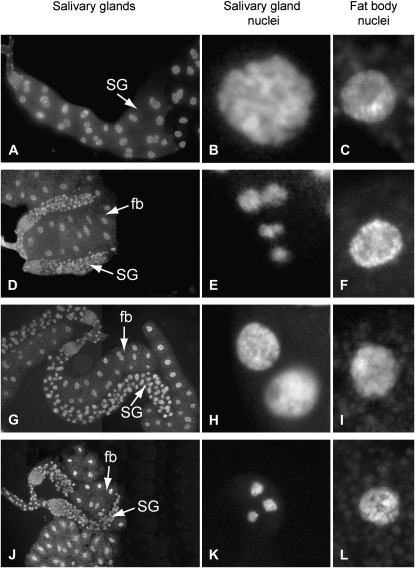Figure 4.—
Effects of point mutations in SUUR on its ability to suppress endoreplication in salivary glands upon overexpression from early development. Left column, salivary gland; middle column, salivary gland nuclei; right column, fat body nuclei photographed under the same magnification. (A–C) Oregon-R. (D) Ectopic expression of SUUR protein in salivary glands under the AB1-GAL4 driver suppresses polytenization, which leads to the formation of miniature salivary gland. The size of the salivary gland nuclei in AB1-GAL4>UAS-SuUR larvae is dramatically reduced (E) as compared to the fat body nuclei (F) and wild-type salivary gland nuclei (B). (G) Ectopic expression of SUURNmut with the AB1-GAL4 driver results in partial suppression of polytenization. Salivary gland nuclei in AB1-GAL4>UAS-SuURNmut larvae (H) are similar in size to those of the fat body (I), only slightly smaller than in Oregon-R (B), but significantly larger than in AB1-GAL4>UAS-SuUR larvae (E). (J–L) Effects of ectopic expression of SUURCmut on polytenization in the salivary gland are indistinguishable from those of the full-length SUUR. Salivary gland (SG) nuclei and fat body (fb) nuclei were stained with Hoechst.

